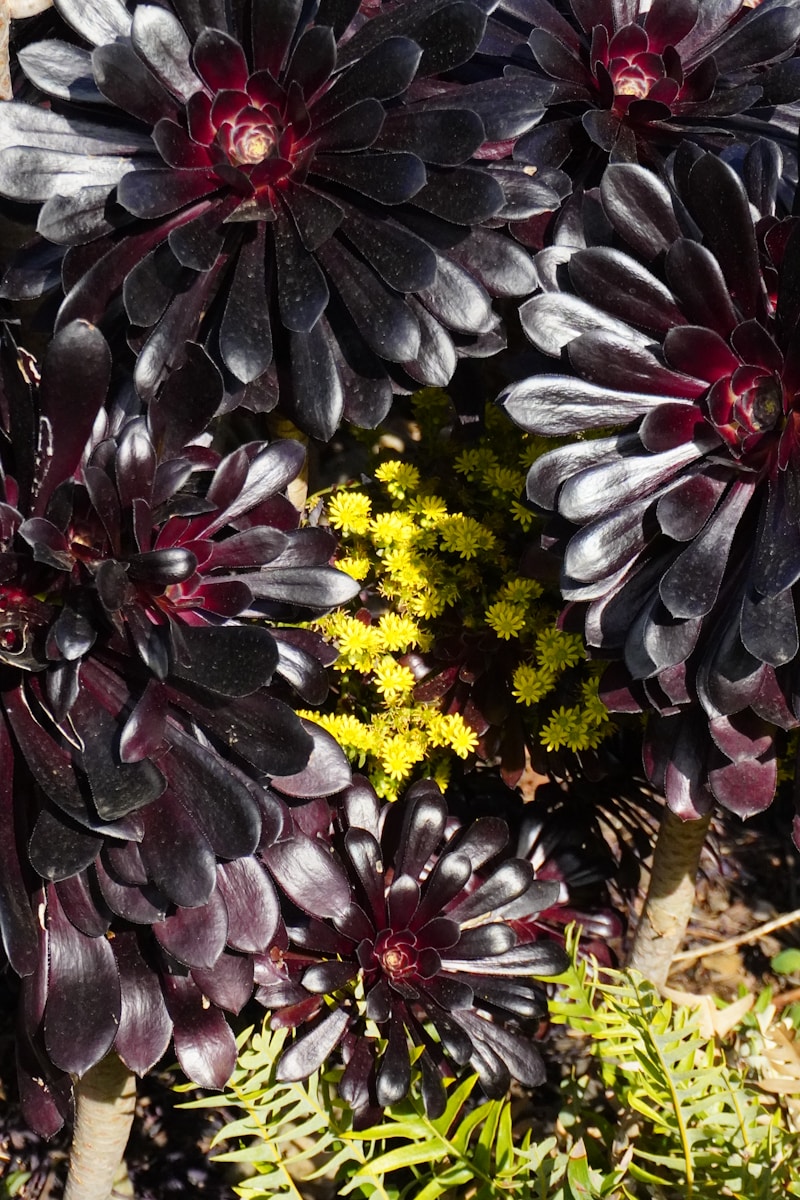The first artifact I found was a piece of pink-purple glass next to an Aeonium. The glass was from a lamp that my parents owned in the 1970s. The lamp sat on their bureau and their cat, Samantha, knocked it off one morning to wake them to feed her. She was an insistent cat who typically started with smaller items — coins, a wallet, a hair pic — so they must have ignored her long enough that the lamp was hit with a very firm paw.
The second artifact was a conch near an old rambling jade plant in the back of the garden. The top of the conch was weathered to a gray cement-like finish, rendering it a masonry brick. It was from my grandmother’s shell collection. In the 1978 earthquake, I loved her shell collection so much that I ran into my parents’ closet where it was stored. My five-year-old body was buried in clothes that flew from their hangars, all in my attempt to save what I perceived as my family’s most valuable possession.
Amid the succulents, I also find a variety of frog ornaments. Frogs were my thing, or so I thought. I can’t tell if these frogs were mine or if my mother somehow adopted my proclivity towards amphibians, making it her own. There is also a long history between us of me discovering that my love of Montana, of rangeland, of wilderness, were really her loves first.
For years, my mother’s dementia grew and she stayed at home. Anything that moved could trigger anxiety, managed by my father and medication. They could not sell their second car even though she couldn’t drive because she would sense a discrepancy in the composition of the driveway. My father could not sort through food in the refrigerator or pantry to reorganize or throw away while she was awake. Moving anything, cleaning anything, rearranging or sorting — all of that provoked deep anxiety, and so there were things that were simply not done.
Secretly and discreetly, I have been attempting to clean up for years, mostly when she napped. And as the dementia progressed, the naps grew more frequent and longer. And now that she lives in a care facility down the road, my cleaning is unleashed and frenetic. I fill the trash bin every time I visit. If there were more bins, I would fill them too. I take multiple carloads per day to thrift stores. I wish I could say that it’s therapeutic; but it is more that is pent up.
Even knowing that the dementia was there in some form for over a decade, somehow the shell collection rotting in the garden slays me more than anything as I discover more and more shells. It makes me so angry that these shells that I loved have been left outside as decorations to deteriorate. I find ridged scallops and giant clams and gastropods of all sorts, all from the collection and stained or bleached into oblivion.
A decade ago, at a small gathering of their friends in the garden, my parents hid inside with gin and tonics, while I wandered outside with their friends, noticing for the first time the profusion of broken pottery amid succulents. I was both perplexed and ashamed. Why are my parents hiding in the kitchen? And why are there so many pottery sherds all over the ground?
Recently, I made a decision in the midden-like garden. I am keeping the shells and frogs and throwing out the sherds. I walk in transects across the garden to make sure I find everything. Somewhere along the way, my mother must have seen a well-designed garden with ceramic fragments or decorative shells or well-placed frogs. She was trying to emulate something, but instead, it just looks like trash.
Long ago, I managed a water conservation program to incentivize people removing their live grass and replacing it with drought-tolerant plants. I conducted hundreds of pre-inspections of people’s gardens and concluded that gardens were literally indicative of people’s mental health: gardening (or lack of care) indicated what was going on inside of the person. The dementia has been here for a while, the fragments of thought and pottery sherds, the memories and possessions abandoned in plain sight.
Stephanie Anagnoson is a writer in California. She works in the water industry. Her work has appeared in Concho River Review, Frontiers, Mr. Beller’s Neighborhood, Science and Spirit, and UU World.
